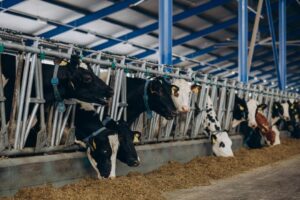The Sustainable Shift: How Eco-Friendly Farm Practices are Changing Agriculture

Understanding the Sustainable Shift
In the contemporary landscape of agriculture, sustainability stands as a beacon, signalling a path to eco-friendly and responsible farming practices. With a growing global population and the imperative need to address climate change, farmers worldwide, especially in Australia, are adopting innovative solutions to increase agricultural productivity while reducing environmental footprint.
In this following article, we will be going over how eco-friendly and sustainable practices are changing agriculture today.
Eco-Friendly Farming Practices
Central to this sustainable shift are eco-friendly farming practices that prioritise the well-being of the land, animals, and farmers. Crop rotation, cover cropping, and reduced use of chemical pesticides and fertilisers are gaining prominence. These practices not only enhance soil fertility but also increase biodiversity and reduce water and air pollution.
Integrating Livestock into Crop Production
A balanced integration of livestock into crop production systems is another significant step towards sustainable agriculture. By allowing animals to graze on cover crops and crop residues, farmers can naturally fertilise the soil, reduce waste, and improve animal health. This practice, known as integrated crop-livestock systems, offers mutual benefits for both plant and animal agriculture.
Investing in Sustainable Infrastructure
Investing in sustainable farm infrastructure is paramount for the transition towards more eco-conscious farming. Farmers are recognising the benefits of utilising renewable energy sources, implementing water-saving technologies, and choosing durable and efficient equipment. Those seeking cattle yards for sale often prioritise features that ensure animal welfare and reduce environmental impact.
The Role of Technology in Sustainable Agriculture
Technology plays a crucial role in advancing sustainable agriculture. Precision agriculture, which utilises GPS, IoT devices, and data analytics, enables farmers to monitor and manage field variability in crops. This technology allows for more accurate use of water, fertilisers, and pesticides, which in turn, minimises waste and environmental degradation.
Community Engagement and Education
Community engagement and education are essential components in promoting and adopting sustainable farming practices. By sharing knowledge and experiences, farmers, agricultural experts, and the wider community can collaborate to develop and implement innovative solutions. Workshops, farm tours, and educational programs are excellent platforms for fostering a culture of sustainability within the agricultural community.
Economic Viability and Market Trends
Sustainability in agriculture is not just about environmental responsibility; it’s also about economic viability. Farmers adopting eco-friendly practices often find that these methods can reduce costs in the long run by improving efficiency and resource use. Additionally, with a growing consumer demand for sustainably produced products, farmers can access new market opportunities and receive premium prices for their produce.
Conclusion: A Brighter Future with Sustainable Agriculture
The shift towards sustainable agriculture marks a significant stride in addressing the environmental and ethical challenges faced by the farming sector. By adopting eco-friendly practices, investing in sustainable infrastructure, leveraging technology, and fostering community engagement, farmers are paving the way for a more resilient and responsible agricultural future. The journey may be filled with challenges, but the rewards – a healthier planet, thriving ecosystems, and prosperous farming communities – are well worth the effort.

